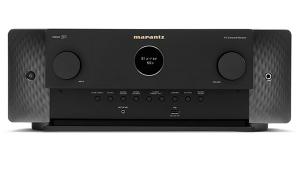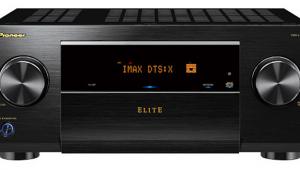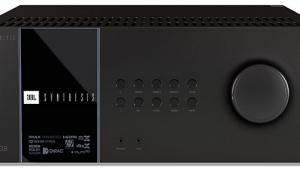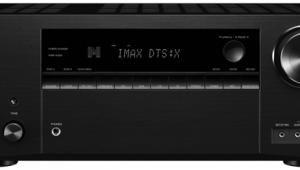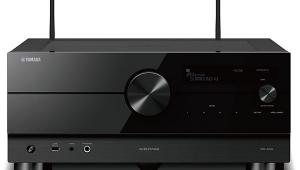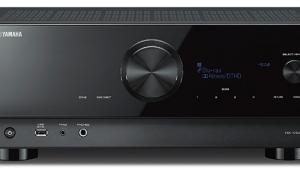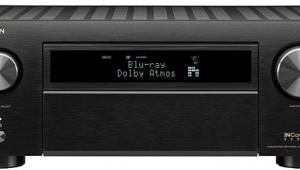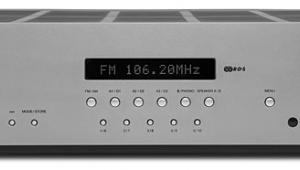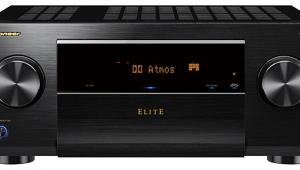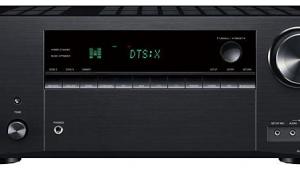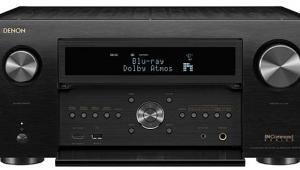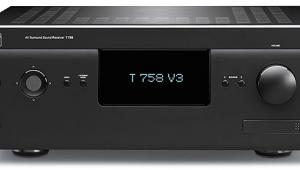NAD T 778 AV Surround Sound Receiver Review
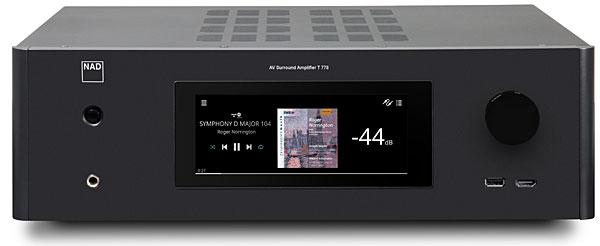
AT A GLANCE
Plus
Striking front panel display
Excellent sound quality
Effective Dirac Live room correction
Future-ready MDC chassis
Minus
No analog video inputs
HDMI Out 2 only supports 1080p
THE VERDICT
Those who value sound quality will find much to love about the T 778, which features BluOS multiroom music streaming and Dirac Live room correction, along with an upgradeable chassis to prevent obsolescence.
While entry-level surround systems move increasingly toward less complicated designs that pair soundbars with wireless speakers and subs, the A/V receiver remains the steadfast workhorse of the media room. As such, it is arguably the most important component in your system, handling all audio/video switching, amplification, audio and room correction processing, and often much more. And as systems move from 5.1- to 11.2-channels-plus, the AVR is being called on to do even more.
I'll be honest: reviewing an AVR is not my favorite thing to do. Beyond the hours of listening and testing it takes to fully evaluate a receiver, installing one in my system is roughly a half-day affair that involves disconnecting my current 13.2-channel Marantz pre-pro and accompanying amplifiers, rerouting all of the wiring to the new unit, and then completely redoing my Control4 automation system to support it.
Having said that, when I first laid eyes on the NAD's new flagship AVR at CES this past January, I knew it would be worth putting in the effort to review it. I had spent time with the company's previous flagship, the T777v3, but it was clear that the T 778 was not just a redesign but a whole new animal instead.
Sexy Beast
Is it still okay to describe a piece of electronics as "sexy"? Because, dammit, that's exactly what the T 778 is! When I walked into NAD's room in the Venetian hotel at CES, the twin "analog" VU meters dancing along with the beat on the T 778's large front-panel display literally stopped me in my tracks and compelled me to say, "Whoa! That's new!" With that large color touchscreen display/controller dominating the front panel, the T 778 is a component you won't want to hide away in a rack or closed cabinet, but instead put out front-and-center, as if inviting guests to check it out.
NAD takes a far more reserved design approach compared with the death-by-buttons confusion that the majority of modern AVR's present. And while previous NAD AVRs featured a front-panel that could be best described as "minimalist," the T 778 takes this concept to the next level by providing just a single power on/off button and volume control knob. (A knob that, incidentally, offers a nice bit of turn-feel: very smooth, but with just enough resistance to indicate substantial build quality.) In a concession to convenience and function, the T 778's front panel also sports a ¼-inch headphone output, along with an HDMI and USB type-A input.
Far from just being a pretty face, the T 778's touchscreen provides a host of information— incoming audio and video signal formats when watching a movie, for example—along with access to the entire setup menu so you can make tweaks without relying on an onscreen display. When listening to music using the integrated BluOS player (more on that in a bit) the screen offers various display options such as album art and track info, or the aforementioned VU meters. You can adjust the screen to bright, dim, or off, and also have it time-out after a short period.
First Impressions
As I mentioned above, I was pretty familiar with the company's recent offerings having spent time with NAD's previous flagship AVR. But the T 778 was new from the ground up, and that was evident in far more than just the front-panel touchscreen.
The T 778 has nine onboard amplifier channels compared with the T777v3's seven, and each channel has a higher power rating. Even so, the T 778's chassis is smaller and nearly 20 pounds lighter than NAD's previous flagship.
These reductions can be attributed to a complete back-panel layout redesign and a new cooling system, along with NAD's move to Hybrid Digital amplifier technology. According to the company, this tech, which relies on Hypex class-D modules, provides very high peak current output while keeping distortion vanishingly low. The chassis has also been strengthened to accommodate rack mounting (rack ears included).
When it comes to amplifier power ratings, I feel NAD for years has been a victim of its own honesty by electing to provide ratings based on the most severe conditions (all channels driven simultaneously at full bandwidth at rated distortion), or what NAD refers to as "Full Disclosure Power." But an uninformed shopper browsing spec sheets might dismiss a NAD amp because it "only" had 85 watts-per-channel compared with another brand touting 150 watts-per-channel or more. NAD now gives a much clearer picture of a unit's capabilities by providing five separate power specs, including FTC ratings at 8 and 4 ohms (140 and 170 watts, respectively, on the T 778) and IHF dynamic ratings at 8 and 4 ohms (165 and 280 watts, respectively).
One thing I'd like to see NAD rethink is the barest-of-minimum, four-page Quick Start Guide it includes in the box. While a more thorough 36-page manual is available online, I don't think it's unreasonable that anyone spending $3,000 on a flagship receiver should expect to get a nice printed version for future reference.
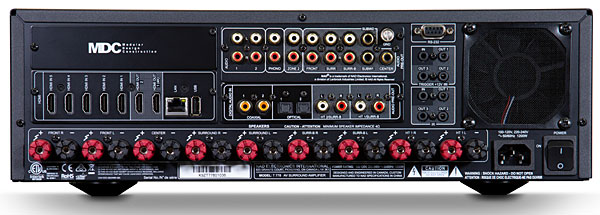
Setup
NAD's redesigned back-panel layout is clean and logical, with like items grouped together. For example, all speaker terminals are arrayed in a line along the bottom, with HDMI connections on the far left, digital audio inputs and analog ins and outs in the middle, and custom installation-friendly connections like trigger, IR, and RS-232 ports on the right.
What you're likely to notice fairly quickly is the T 778's complete lack of any analog video connections. For me, this meant I couldn't connect our Wii gaming system. For you, it either will or won't matter, but it's still worth noting. The five HDMI 2.0b connections are all full-bandwidth 18 Gbps, which is enough to support any current video source. To ensure that its audio signal path remains pure, the T 778 has no video processing whatsoever, including no graphic overlays.
While the T 778 features dual HDMI outputs—the primary one supporting eARC–I found it disappointing that output 2 was limited to 1080p resolution. The greatest benefit to dual HDMI outputs on a receiver is being able to simultaneously feed both an LCD or OLED TV and a front projector in a dual-display setup. With the T 778, switching between my Sony Ultra HDTV and JVC 4K projector meant crawling behind my rack and physically swapping the HDMI cables each time, which really sucked. (This became especially true when I forgot to switch the cables back and then had to walk my wife through the process via Facetime so see could watch TV while I was out.) NAD suggests buying an HDMI splitter, but I'd argue that with a $3,000 AVR you shouldn't have to.
I prefer using banana plugs since they make a secure speaker connection without any worry of a stray wire shorting something out. That possibility definitely came to mind here since the T 778's speaker terminals are spaced quite close together.

